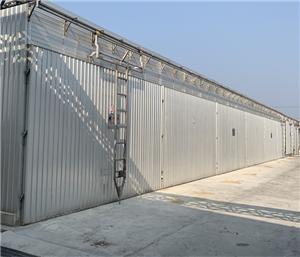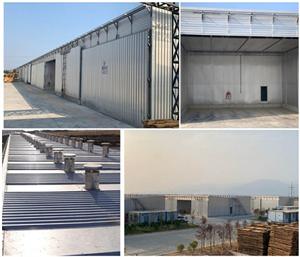Company News
-
2007-2022
The purpose and significance of wood drying
Wet wood suitable materials for industrial applications are usually used for low industrial, density, mechanical strength, mechanical properties, perishability, etc., not directly used, practicality and practicality after treatment and drying. It mainly has the following aspects.
-
0607-2022
China Wood Moisture Content
Wood drying refers to the process of turning the water in the wood into steam and discharging the wood by relying on the energy provided by the outside world. Drying of wood can be divided into two categories: natural drying and artificial drying.
-
0407-2022
"Illustration" of the whole process of wood drying
A schematic diagram of the wood drying process. The wood waste collected during the wood processing process is burned in the boiler to provide thermal resources for the wood drying kiln.
-
2906-2022
Drying kiln equipment structure 2
Conventional drying kilns are generally composed of kiln body, kiln door (lifting door device), heating system, humidity control system, air circulation system, intake and exhaust system, detection system and control system.
-
2706-2022
Drying kiln equipment structure1
Conventional drying kilns are generally composed of kiln body, kiln door (lifting door device), heating system, humidity control system, air circulation system, intake and exhaust system, detection system and control system.
-
2104-2022
The Indonesian customer installed two wood drying kilns by himself
After more than 20 days of efforts, the Indonesian customer installed two wood drying kilns by himself according to the drawings, videos and remote installation instructions provided by our company
-
0307-2023
What is wood carbonization?
Wood carbonization, also known as wood high-temperature heat treatment (Thermal Modification), is an environmentally friendly wood that uses water vapor, inert gas, oil, water, etc. as heat-conducting media to perform short-term pyrolysis treatment on wood at a temperature of 160-250 °C. Physical Protection Technology.
-
1505-2023
Loading the goods exported to Malaysia
On May 11th, the workshop of the factory was very busy. The order from the old customer in Malaysia was being loaded methodically. Thank you for the trust of the old customer.
-
0805-2023
Significance of wood drying
Wood drying is the process of heating the wood under the condition of controlling the medium temperature and relative humidity, so that the internal moisture of the wood moves to the surface, the surface moisture evaporates to the outside, and the process of gradually removing moisture from the wood. In order to achieve effective drying quality, it is necessary to control the temperature and humidity of the drying medium, and adopt a reasonable drying process and operation method. The more common method used at present is the method of convection drying.So what are the benefits of drying wood? There are mainly the following aspects:
-
1004-2023
Performance characteristics of carbonized wood
Carbonized wood is a modified product of high-temperature heat treatment of wood. Compared with ordinary wood, it has a series of characteristics:




